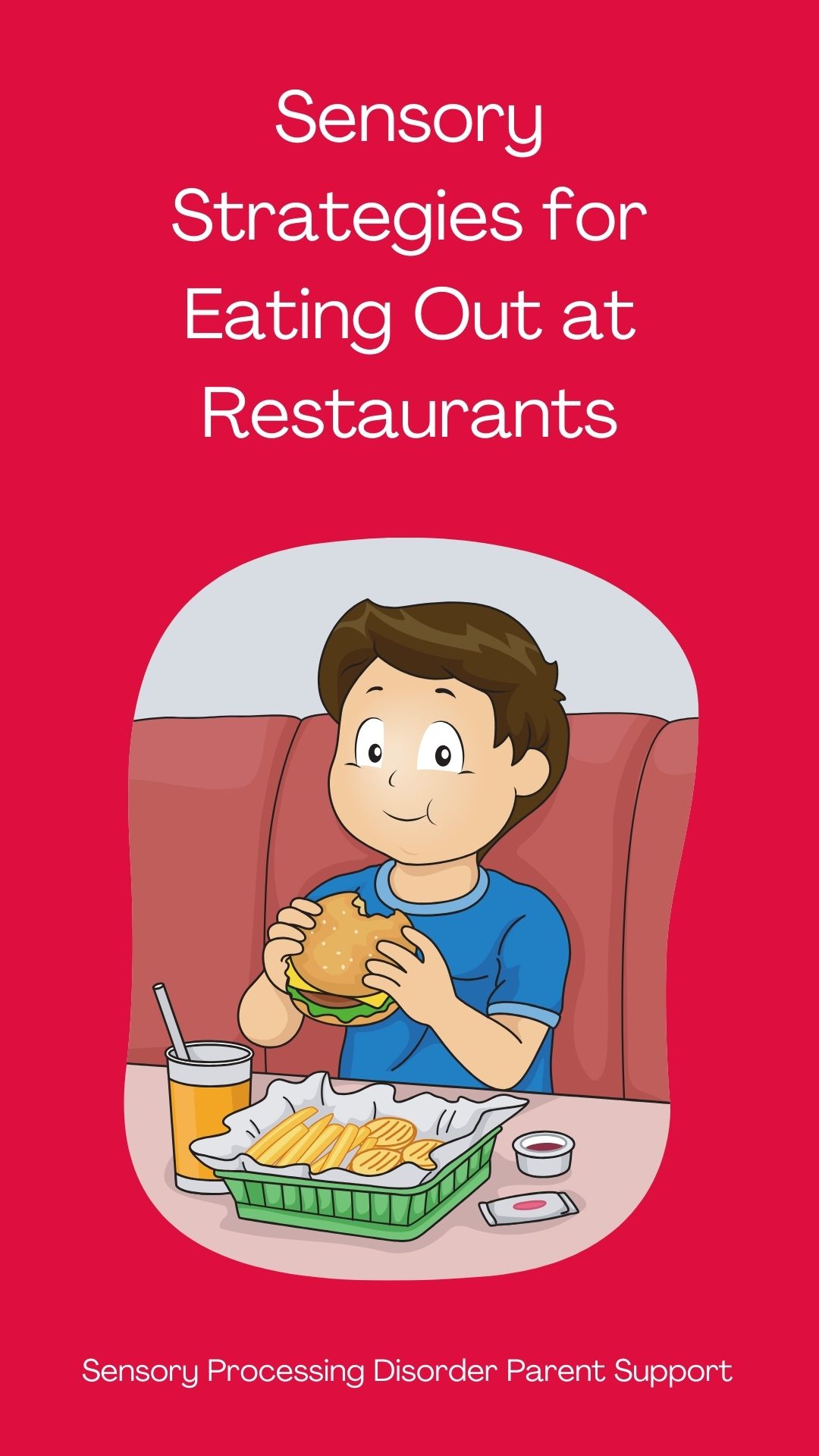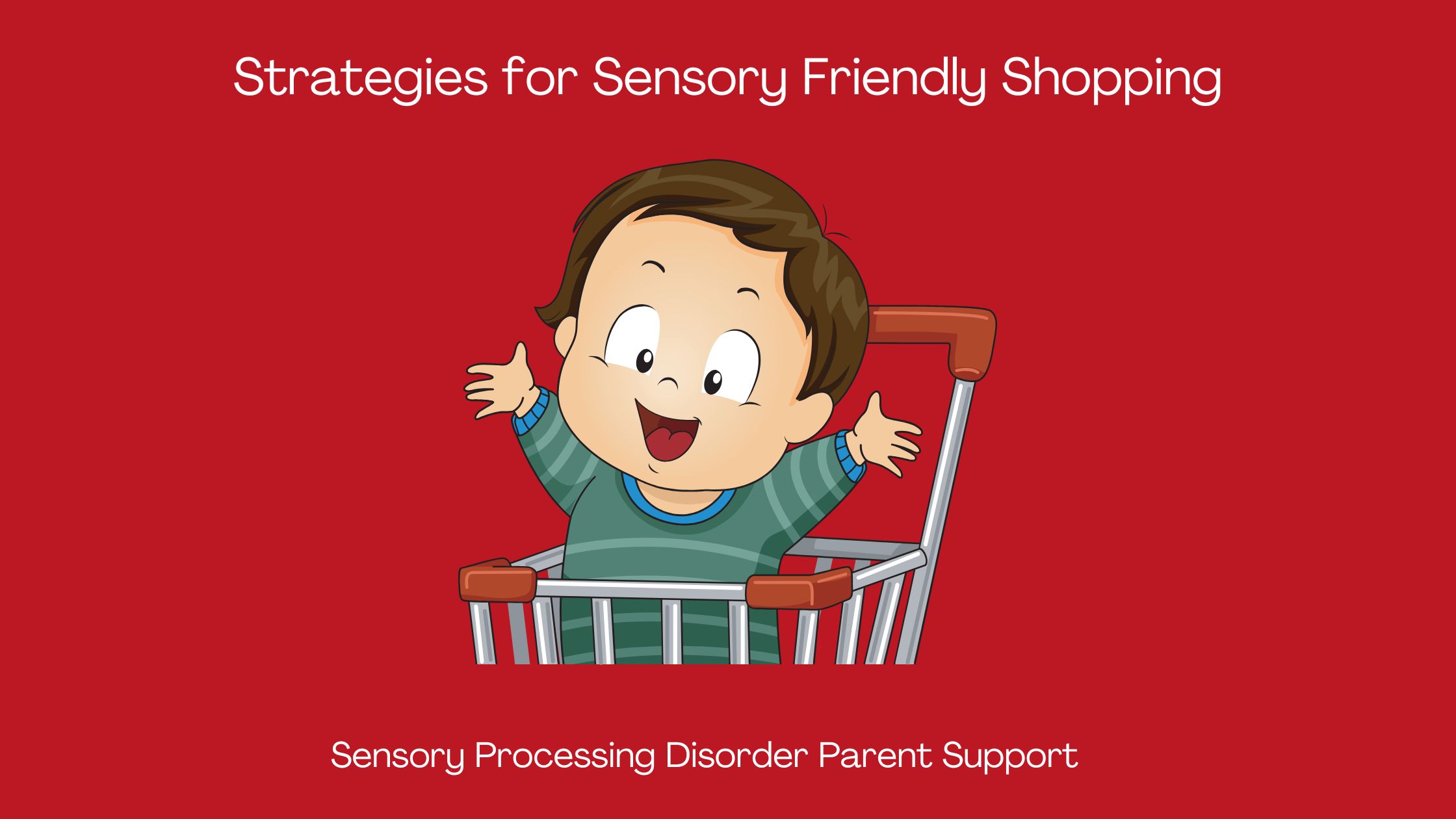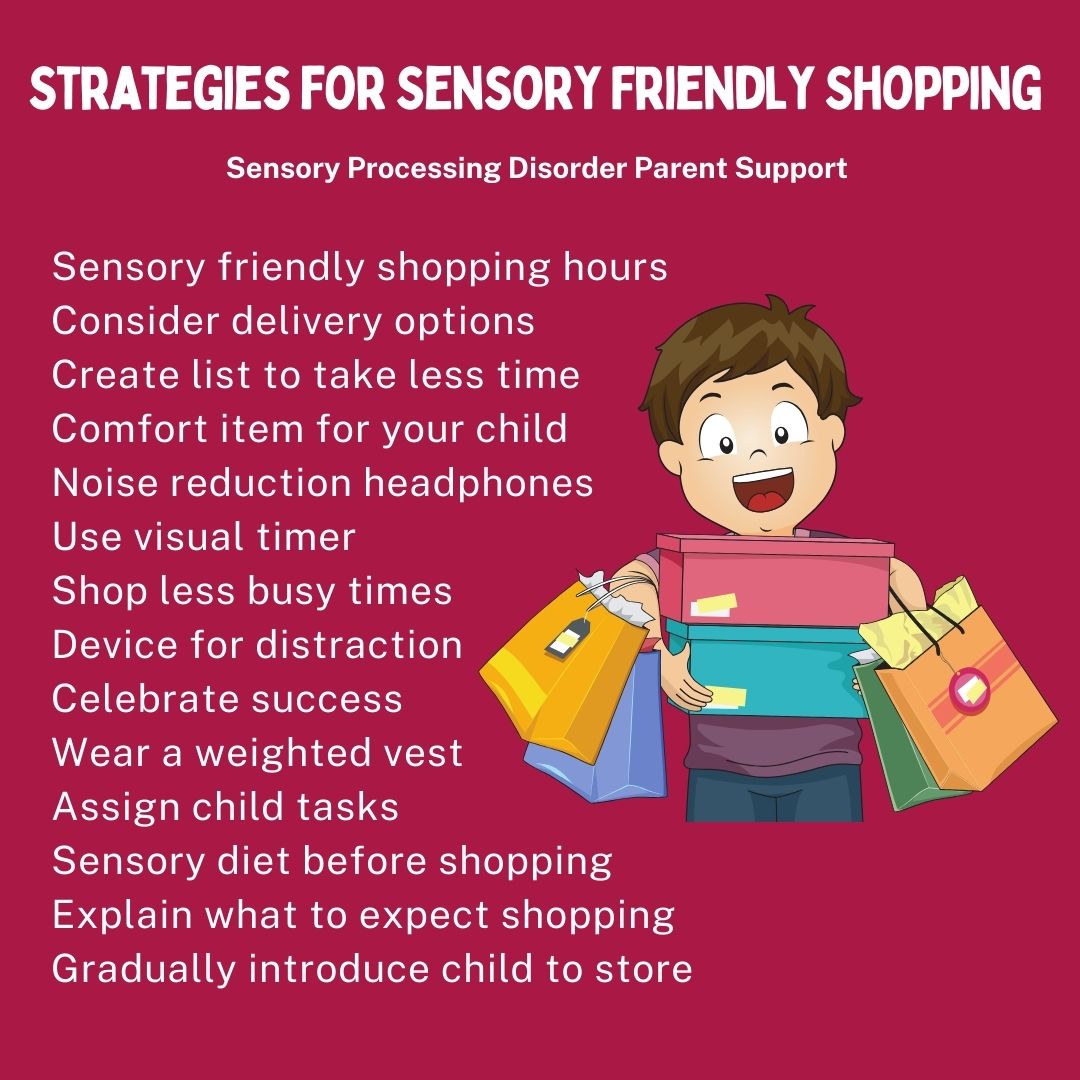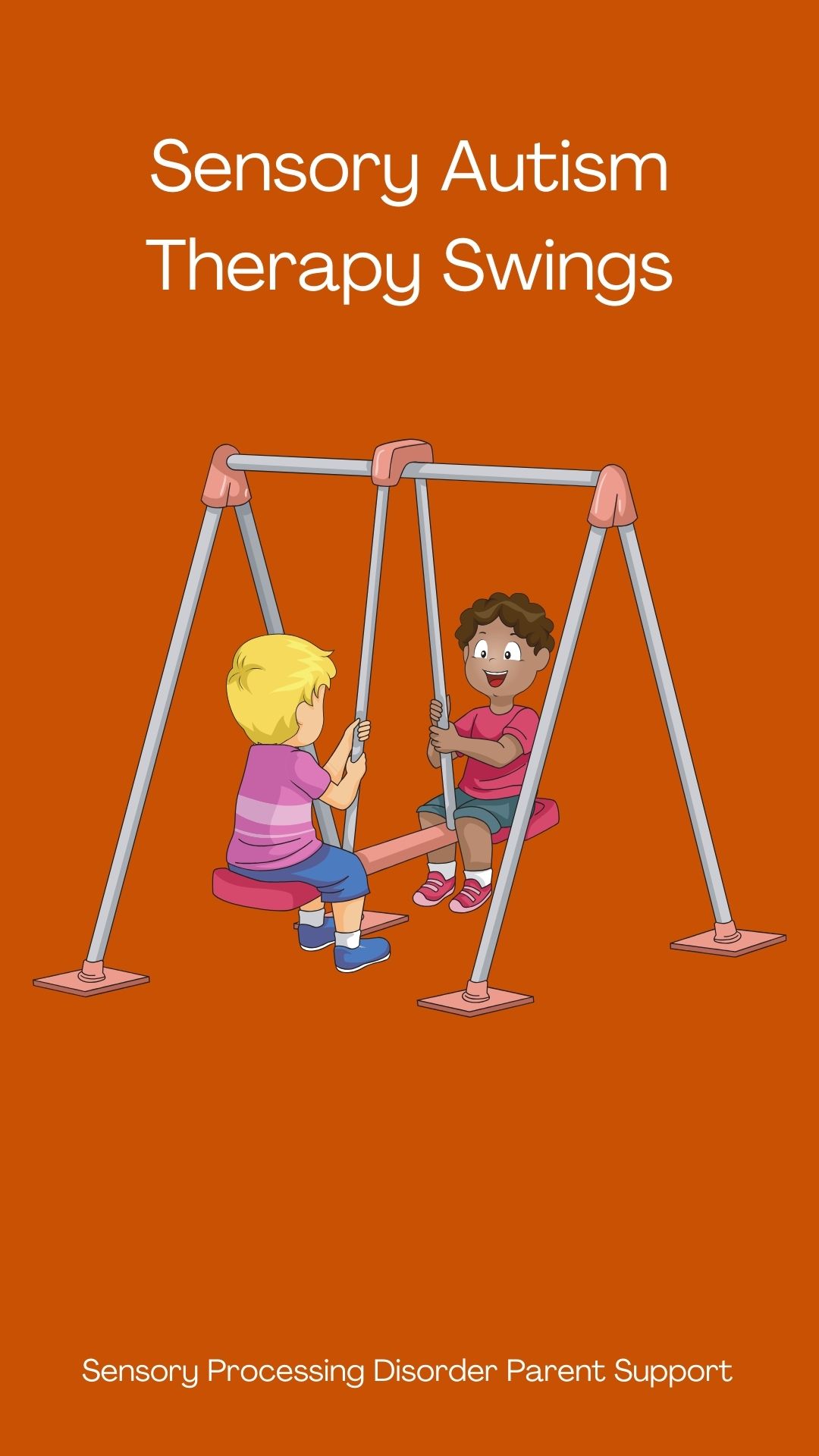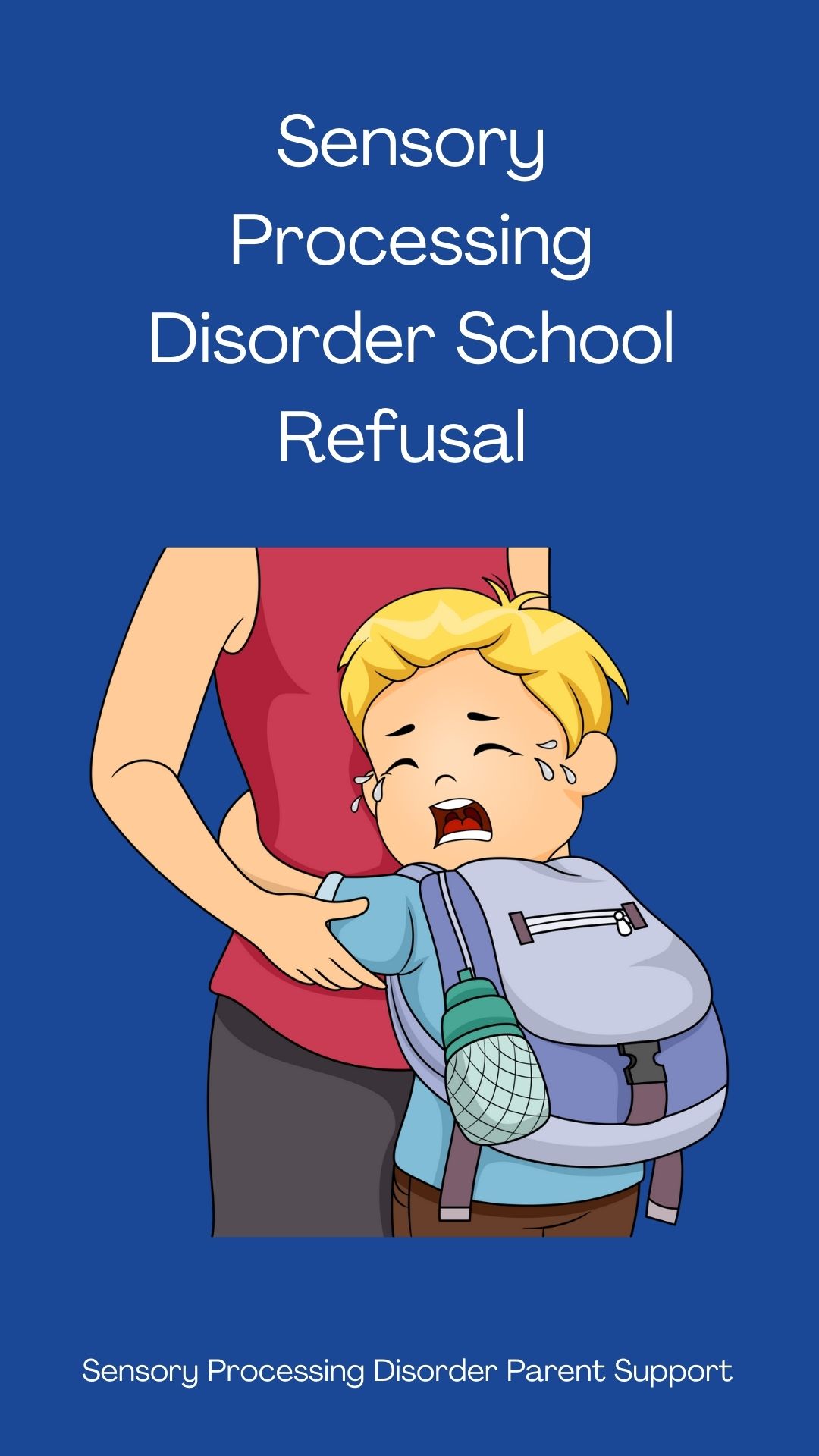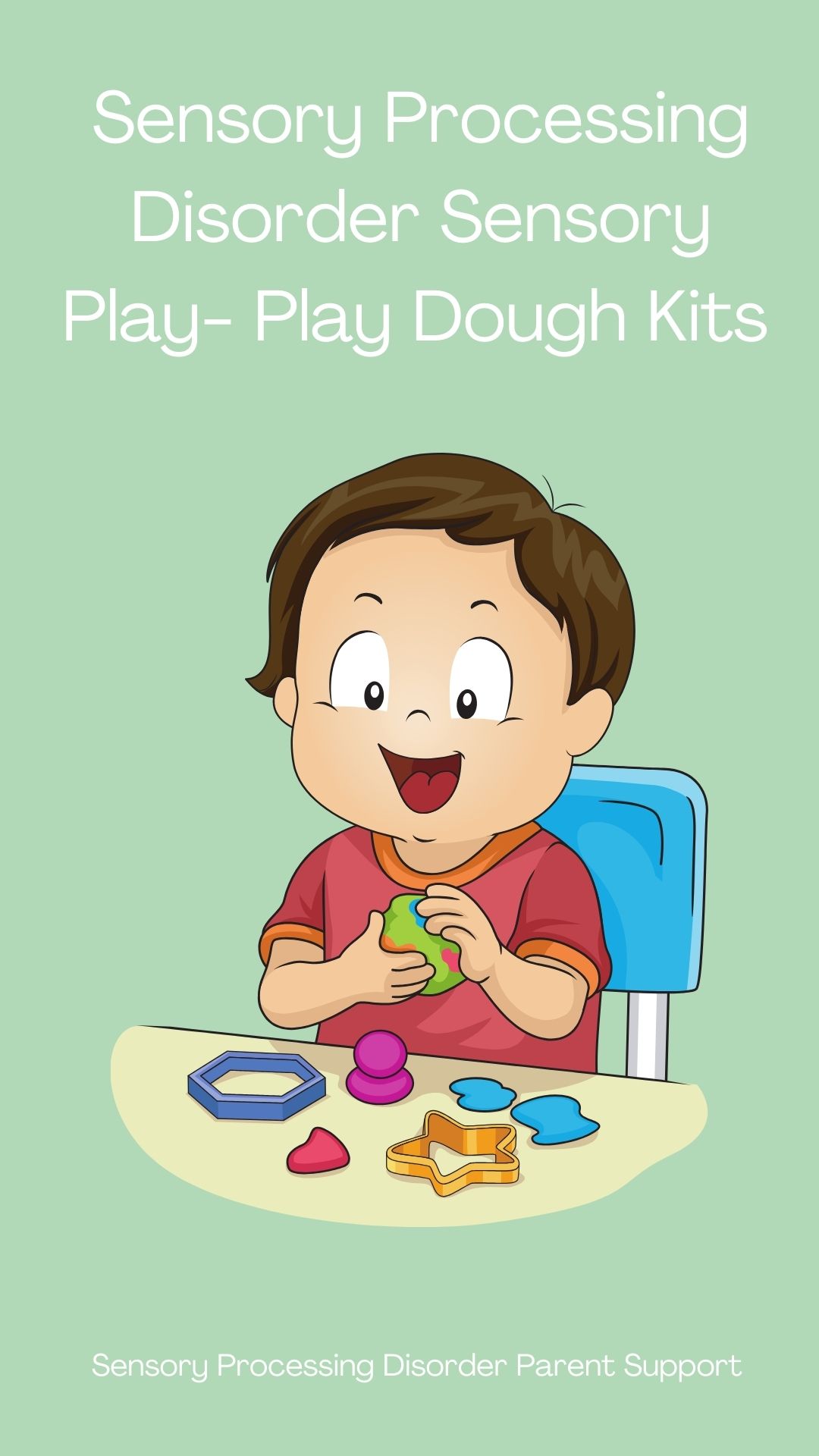There are several things that you can try to help your child have a sensory friendly shopping experience.
Shop during hours a]that are not as busy and avoid the more busy times like weekends and holidays. In the mornings during the week or later in the evenings are usually less busier times during the week.
Shopping during less busy times will also reduce waiting in longer line ups with your child in the store.
Create a list of the items you will be purchasing before you leave to go the store.
Bring your child's favorite toy or something they find comforting like a blanket for reassurance.
Get our child involved and ask them to do different tasks while shopping such as finding different things they enjoy.
Gradually introduce your child to a store or a mall slowly, gradually increasing their exposure over time.
Some stores offer designated times with reduced sensory input such as dimmed lighting, lower music and a quiet environment with less crowds.
Use a visual timer to help your child understand when the shopping trip will end.
If your child has a weighted vest, bring it along to provide deep pressure input and help your child feel calm and secure while they are shopping.
Prepare ahead of schedule and create a visual schedule or read a social story. This will help your child know the plan and what to expect while on the shopping trip.
Discuss the shopping trip with your child ahead of leaving and explain the shopping plan so they know what they will be doing. This will reduce their anxiety.
Talk with your child about their sensory needs and work together to come up with strategies to manage their sensory processing disorder while shopping.
Don't forget to pack your child's sensory tools such as their noise-canceling headphones, fidget toys or their weighted lap pad.
Fill your child's sensory diet before you leave to go shopping. Include sensory calming activities and heavy work activities.
Consider bringing a blanket for your child as a safe hiding space where they can retreat if they become overwhelmed while shopping.
Choose more quiet areas in the mall that are less crowded sections and avoid busier areas like the food court or toy aisles.
Minimize your child's sensory input and have them wear comfortable light clothing and whatever else they may require to reduce their sensory overload.
Your child may require a break. Give them the time they may need in a quiet area or outside the mall or store.
Contact stores and ask them if they offer sensory-friendly shopping hours or programs.
Local autism and sensory groups may have lists of sensory-friendly stores and times.
If shopping in a story or mall is too overwhelming, there may be options for online shopping or curbside pickup services to minimize your in-store shopping.
Understand that shopping can be challenging for children who struggle with sensory processing disorder so always be patient and understanding.
Be flexible because your child may need you to adjust your plans and sometimes the shopping trip needs to be cut short.
Celebrate even small shopping successes and achievements, focus on the positives from your child's shopping experience.
Remember each person who struggles with sensory processing differences experiences sensory sensitivities differently. Be calm and offer your child support, connection and love as they need it. Ask your child's occupational therapist to help your child develop coping strategies for shopping with sensory processing disorder.
